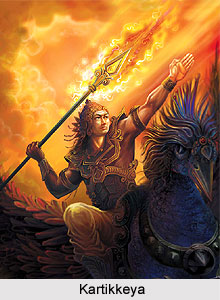Myths of India, also known as Deepak Chopra`s India Authentic, is an Indian comics series, published and distributed in India and abroad by Liquid Comics, which was initially known as Virgin Comics. The Myths of India series, presented by Medical Doctor and writer Deepak Chopra, incorporates a number of one-shot comic books by Liquid Comics which graphically illustrates the various legends and myths from India. The graphical presentation of the different tales related to the immortal Indian gods and goddesses, who control the forces of the Universe and reign over mankind, is done with the state of the art technology to make it appealing not only to the Indian readers, but also to attract international readers as well. The India Authentic series is envisioned by Deepak Chopra, along with writer Saurav Mohapatra and illustrated by many artists like Abhishek Singh, Satish Tayade and other artists. The initial 5 issues in the series were titled as the Book of Shiva.
Medical Doctor and author Deepak Chopra presents the legends of the Indian gods such as Ganesha, Kali, Shiva, Indra, Yama, Hanuman, Uma, Garuda, Kartikkeya and others, illustrated in a visually dazzling form, created by a talented group of Indian comics creators.
Content of Myths of India
Ganesha
The legend of Ganesha was launched as the first issue which depicted the tales related with the birth of the son of Lord Shiva. Ganesha fought for his life, in order to keep a promise which he gave to his mother Uma. This issue shows the legendary tale of how Ganesha acquired the iconic elephant head.
Shiva
 The fifth issue in the series told the story of Lord Shiva, the divine destroyer, and events related to the churning of the prehistoric ocean.
The fifth issue in the series told the story of Lord Shiva, the divine destroyer, and events related to the churning of the prehistoric ocean.
Kali
This was the second issue in the Myths of India or India Authentic series tells the events related to the awakening of Goddess Kali. She is a relentless destroyer, who was beckoned by the gods to fight and army of demonic warriors.
Indra
Indra was the third issue in the series and illustrates the tales of the combat between the king of the heavens, Lord Indra and Vritra, the serpent demon.
Uma
This was released as the fourth issue in Myths of India by Liquid Comics and retells the story of Uma and her pursuit to win the love of Lord Shiva.
Vishnu
Vishnu was the sixth issue in Myths of India and recounted the story of the Narasimha incarnation of Lord Vishnu. Narasimha was the fourth avatar of the Lord and protected the people of mortal earth from a demon overlord.
Yama
This was the seventh issue in the India Authentic series by Deepak Chopra and graphically illustrated the legend of Lord Yama, who is the God of death. Yama is the ruler of Naraka or the underworld known as Hell.
Garuda
Garuda was published as the eighth issue in the Indian comics series and recounted the tales of the mighty Eagle God Garuda, who was an Avian warrior.
Kartikkeya
 Kartikkeya (Kartikeya), also popular as Murugan, was the ninth stand alone one -shot comic book in the Myths of India series. He is the older son of the son of Lord Shiva and Uma (Parvati).
Kartikkeya (Kartikeya), also popular as Murugan, was the ninth stand alone one -shot comic book in the Myths of India series. He is the older son of the son of Lord Shiva and Uma (Parvati).
Parashuram
The tenth issue retold the story of Lord Parashurama Bhargava, who was another incarnation of Lord Vishnu. The issue tells about his various combats with the evil kings.
Hanuman
This was the eleventh issue and graphically illustrated the tales of the mighty warrior Lord Hanuman, as depicted in the Indian epic the Ramayana.
Other issues in the Myths of India series include Andhaka (twelfth issue), Lakshmi (thirteenth issue), Saraswati (fourteenth issue), Krishna (fifteenth issue) and The Saffron Princess, which was the sixteenth issue in the series.
The Indian comics series of Myths of India, also known as India Authentic, published by Liquid comics, has been much appreciated and widely accepted by the readers in India and abroad.













